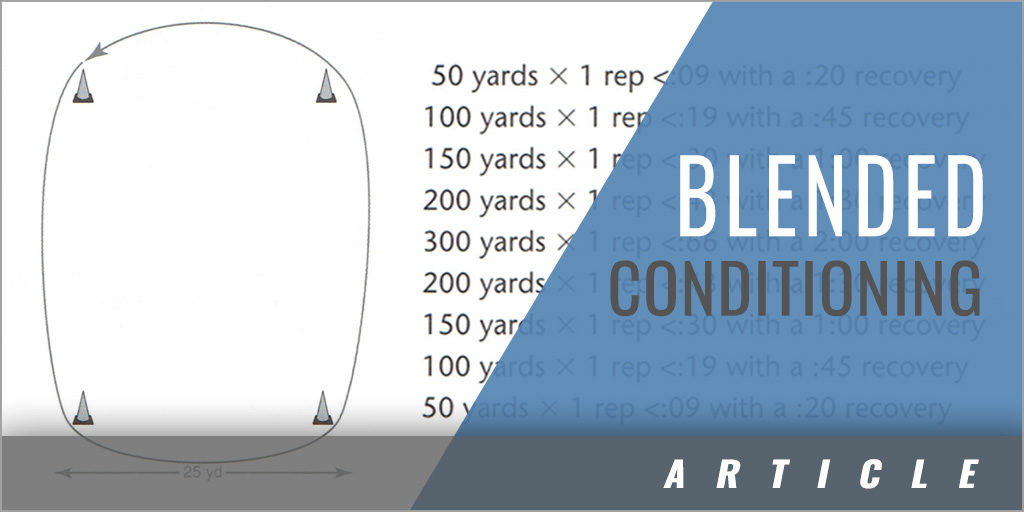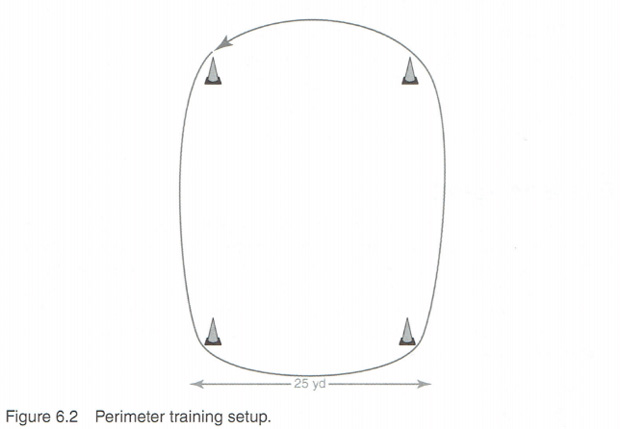|
By: Tom Howley Provided by: Human Kinetics Originally Published in: Complete Conditioning for Lacrosse Although classified primarily as an anaerobic sport, lacrosse engages all three energy systems at different times throughout the game or season. For example, against an offense that emphasizes shot frequency, a significant amount of sprinting might occur between ends of the field and on both the offensive and defensive ends. Against a slower, more methodical team that maximizes possession time and works for high-quality shot opportunities, the flow may be slower and sprint opportunities may be minimal. Conditioning during the off-season must reflect the need to prepare for all situations, ranging from highly aerobic to almost exclusively ATP-PC. The following examples of blended conditioning, which combines elements of all energy systems and truly mimics the demands of game day. Blended Shuttle Ladder To prepare for a game-like situation in which multiple energy systems are utilized, the shuttle ladder is a very useful training tool. Cones are placed on lines 25 yards apart and the athlete begins behind the start line. On command, the athlete sprints the 25-yard course and touches the far line and returns to the start line for a total of 50 yards. The number of reps should correspond with the distance prescribed. An example of a blended shuttle ladder is as follows:
One-Mile Sprint In the one-mile (1.6 km) sprint, the athlete begins on the starting line of an Olympic track. At the command, the athlete completes the prescribed distance around the track and finishes through the starting line. The event should be timed, and the athlete should strive to improve throughout the off-season. The athlete begins behind the start line and waits for the start command. Sprint the designated distance and finish through the end line. An example is as follows.
Perimeters When space is limited, running the perimeter of a 25-yard x 25-yard square can be a useful (indoor) training event. In addition, if athletes are placed at all four corners, they can run simultaneously in the same direction. The number of athletes performing the event can be multiplied by having some athletes run while others are resting inside the box and cheering for their teammates. Perimeter training allows the athlete to combine ATP-PC training with elements from the glycolytic energy system. Mark off a 25-yard x 25-yard square with cones (see figure 6.2). The athlete begins at one cone, runs a lap around all four cones for a distance of 100 yards, ends at the starting cone, and rests for the prescribed time. The athlete then completes two laps around all four cones for a total distance of 200 yards. This continues for the prescribed distance. An example is as follows.
Regardless of an athlete's experience or skill level, conditioning plays a major role in the development of a lacrosse player. If the coach can provide a vision of game-day performance during the preseason, players will accept the discomfort of training and focus on the big-picture objective of success on game day. If properly prepared, athletes will be mentally sharp and able to execute the game-plan details rather than focusing on their physical state during a game. |








